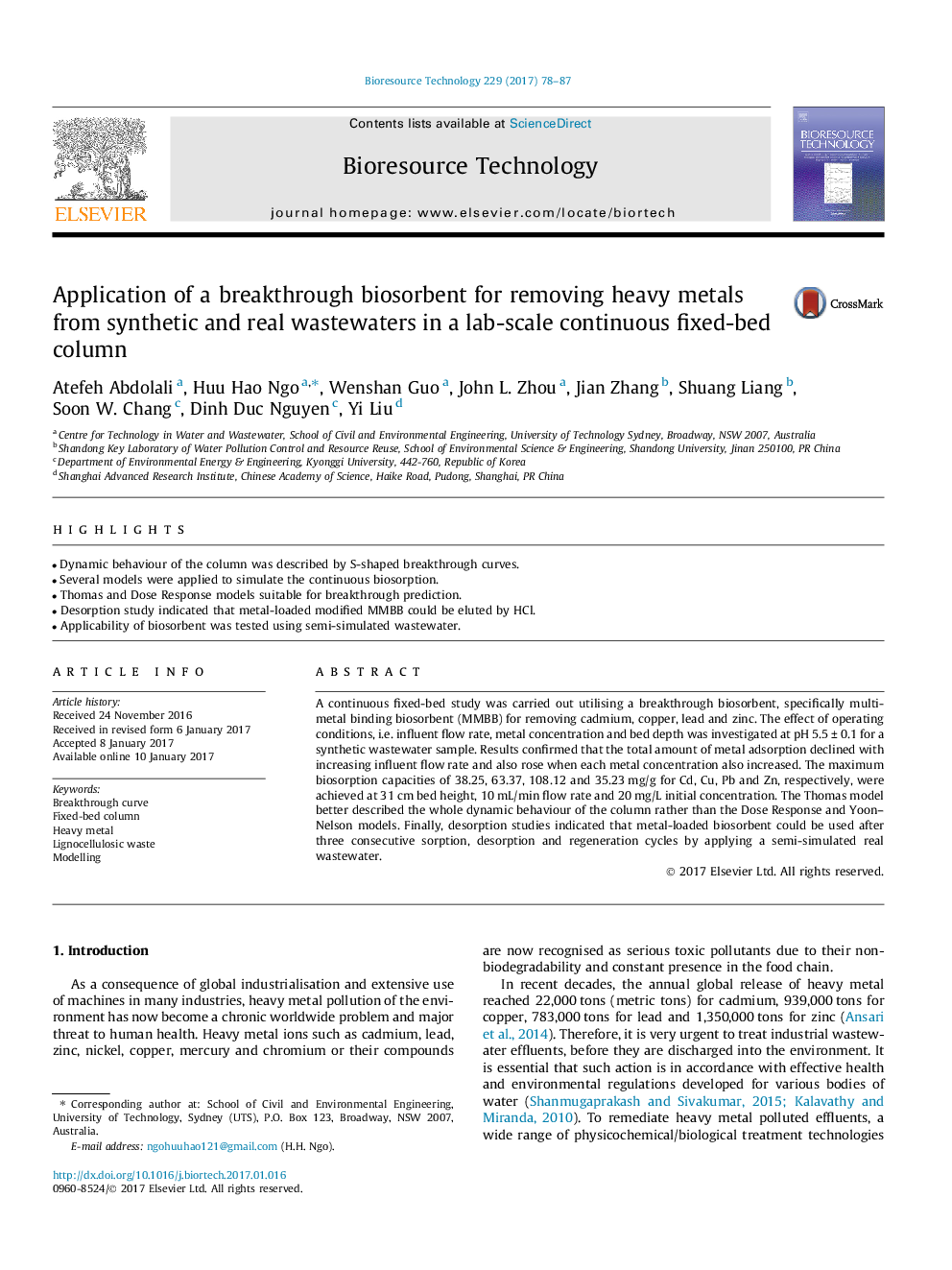| کد مقاله | کد نشریه | سال انتشار | مقاله انگلیسی | نسخه تمام متن |
|---|---|---|---|---|
| 4997603 | 1459914 | 2017 | 10 صفحه PDF | دانلود رایگان |
- Dynamic behaviour of the column was described by S-shaped breakthrough curves.
- Several models were applied to simulate the continuous biosorption.
- Thomas and Dose Response models suitable for breakthrough prediction.
- Desorption study indicated that metal-loaded modified MMBB could be eluted by HCl.
- Applicability of biosorbent was tested using semi-simulated wastewater.
A continuous fixed-bed study was carried out utilising a breakthrough biosorbent, specifically multi-metal binding biosorbent (MMBB) for removing cadmium, copper, lead and zinc. The effect of operating conditions, i.e. influent flow rate, metal concentration and bed depth was investigated at pH 5.5 ± 0.1 for a synthetic wastewater sample. Results confirmed that the total amount of metal adsorption declined with increasing influent flow rate and also rose when each metal concentration also increased. The maximum biosorption capacities of 38.25, 63.37, 108.12 and 35.23 mg/g for Cd, Cu, Pb and Zn, respectively, were achieved at 31 cm bed height, 10 mL/min flow rate and 20 mg/L initial concentration. The Thomas model better described the whole dynamic behaviour of the column rather than the Dose Response and Yoon-Nelson models. Finally, desorption studies indicated that metal-loaded biosorbent could be used after three consecutive sorption, desorption and regeneration cycles by applying a semi-simulated real wastewater.
Journal: Bioresource Technology - Volume 229, April 2017, Pages 78-87
